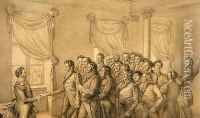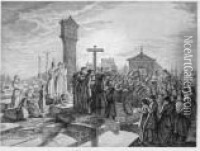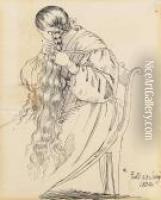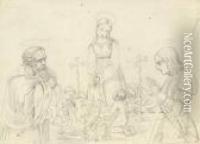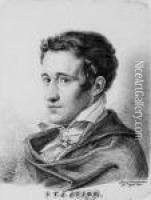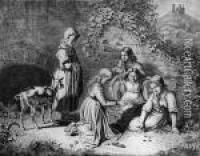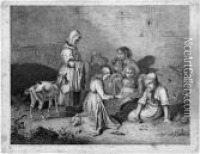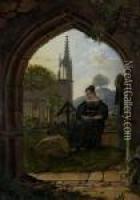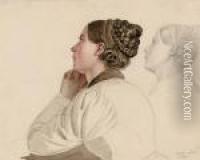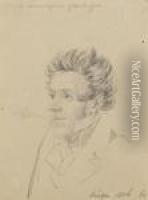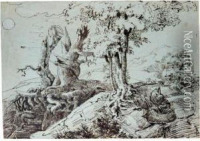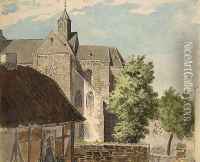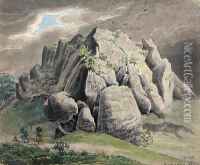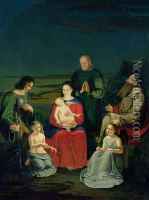Ludwig Emil Grimm Paintings
Ludwig Emil Grimm, a lesser-known yet noteworthy figure in the realm of German art and culture, was born on March 14, 1790, in Hanau, Germany. He was the younger brother of the famous folklorists Jacob and Wilhelm Grimm, best known for their collection of fairy tales. Ludwig's inclination towards the arts became evident in his early years, and he pursued his passion with dedication.
As a young man, Ludwig studied at the Academy of Arts in Kassel and later worked in Munich, which at the time was a vibrant center for German artists. He was primarily a painter and engraver, whose work captured various subjects including portraits, landscapes, and scenes of everyday life. His style was influenced by Romanticism, a movement that emphasized emotion, individualism, and the glorification of the past and nature.
Grimm's artistic career, though not as widely recognized as that of his brothers in the literary field, was nevertheless significant. He taught at the Academy of Arts in Kassel and influenced a number of students. His engravings and illustrations contributed to the visual culture of the period, and he sometimes illustrated works for his brothers.
Despite facing financial struggles and living in the shadow of his illustrious siblings, Ludwig maintained a close relationship with his family. His memoirs, though less famous, provide a personal glimpse into the life of the Grimm family and the cultural milieu of the time.
Ludwig Emil Grimm passed away on April 4, 1863, in Kassel. While he may not have achieved the same level of fame as his brothers, his contributions to German art and his role in the cultural history of the period remain valuable to historians and art enthusiasts alike.
